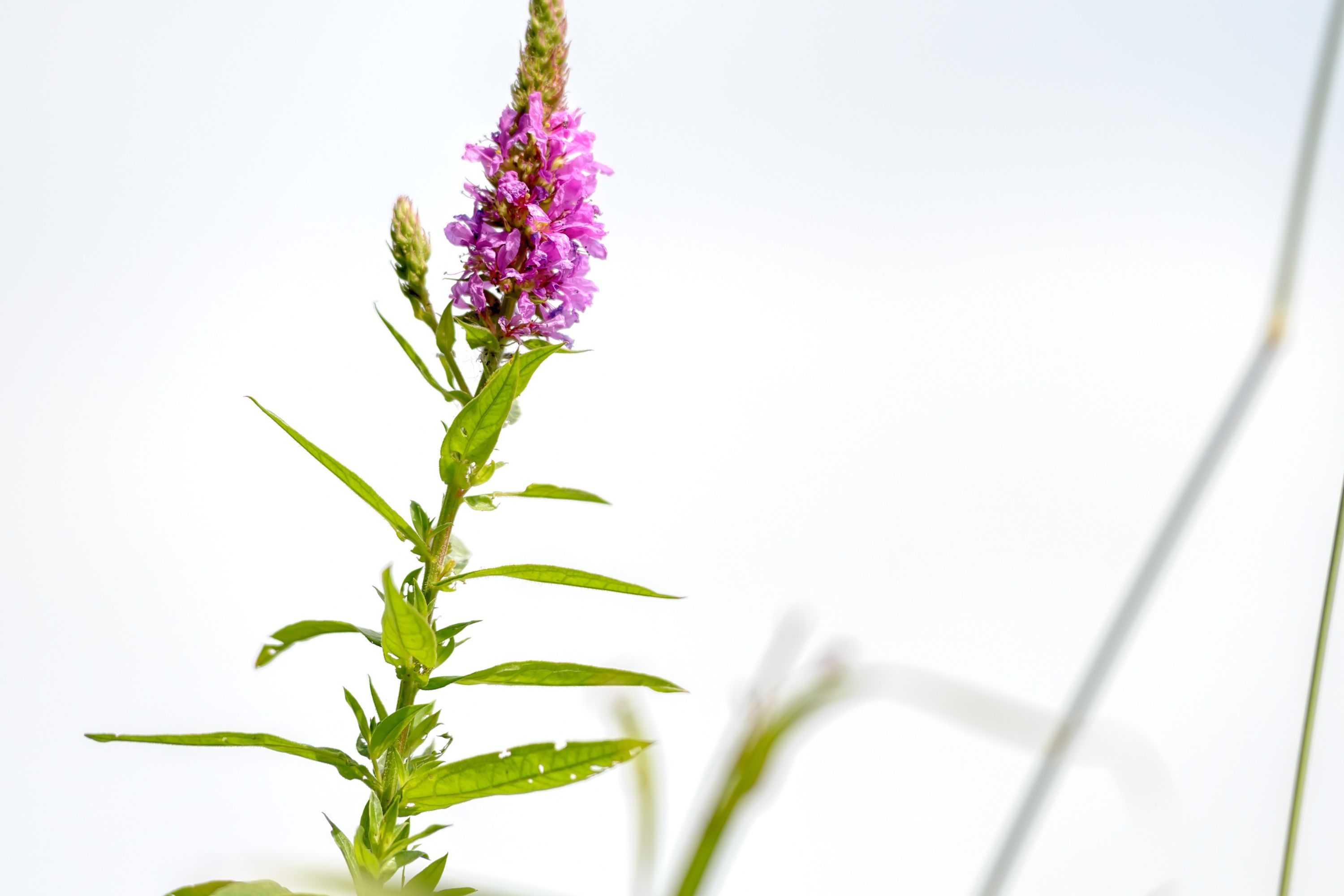Purple loosestrife
(Lythrum salicaria)

Description
Lythrum salicaria, commonly known as purple loosestrife, is a perennial herbaceous plant species native to Eurasia but naturalized in North America, where it is considered an invasive species in some regions. It belongs to the family Lythraceae, which comprises approximately 32 genera and 620 species. Purple loosestrife is a highly adaptable plant that can thrive in a variety of habitats, from wetlands and marshes to roadside ditches and disturbed areas. It is also a popular ornamental plant in gardens, thanks to its showy spikes of pink-purple flowers that bloom from mid-summer to early fall. In this article, we will explore the biology, ecology, and cultural significance of Lythrum salicaria in detail. Taxonomy: Lythrum salicaria was first described by Carl Linnaeus in 1753 in his book Species Plantarum. The genus Lythrum is derived from the Greek word lythron, which means "blood," referring to the red color of some species' flowers. The species name salicaria comes from the Latin word salix, which means "willow," as the plant has narrow leaves that resemble those of willow trees. Description: Purple loosestrife is a herbaceous perennial that can grow up to 2-3 meters tall. It has a deep, woody taproot system and numerous branched stems that are square in cross-section and covered in fine hairs. The leaves are lance-shaped or oblong, about 3-10 cm long, and arranged oppositely along the stems. They are dark green in color and have smooth margins. The flowers of purple loosestrife are its most striking feature. They are arranged in dense, spike-like clusters at the top of the stems and bloom from mid-summer to early fall. Each flower has five to seven petals that are bright pink-purple in color and about 1-2 cm wide. The stamens and pistil are prominently displayed, giving the flowers a frilly appearance. The fruits of purple loosestrife are small, dry capsules that contain many tiny seeds. Distribution: Purple loosestrife is native to Europe and Asia and is widely distributed throughout the temperate regions of the northern hemisphere. It has been introduced to many other parts of the world, including North America, where it is now considered an invasive species. Purple loosestrife was first recorded in North America in the early 19th century, and it has since spread rapidly throughout wetlands and other freshwater habitats, displacing native plant species and altering the natural balance of these ecosystems. Ecology: Purple loosestrife is a highly adaptable plant that can thrive in a wide range of wetland habitats, including marshes, swamps, fens, and roadside ditches. It is often found in disturbed areas, such as along the edges of ponds and streams, where it can outcompete native plant species and form dense monocultures. Purple loosestrife is a prolific seed producer, with each plant capable of producing up to 2.5 million seeds per year. The seeds are dispersed by wind, water, and animals, allowing the plant to colonize new areas rapidly. Once established, purple loosestrife can form dense stands that exclude other plant species, reduce biodiversity, and alter the hydrology of wetland ecosystems. Despite its invasive nature, purple loosestrife does have some ecological value. Its nectar-rich flowers attract a variety of pollinators, including bees, butterflies, and hummingbirds. It also provides cover and nesting habitat for a range of wildlife, including waterfowl and small mammals. Cultural significance: Purple loosestrife has been cultivated as an ornamental plant in gardens for centuries, thanks to its striking flowers.
Taxonomic tree:







